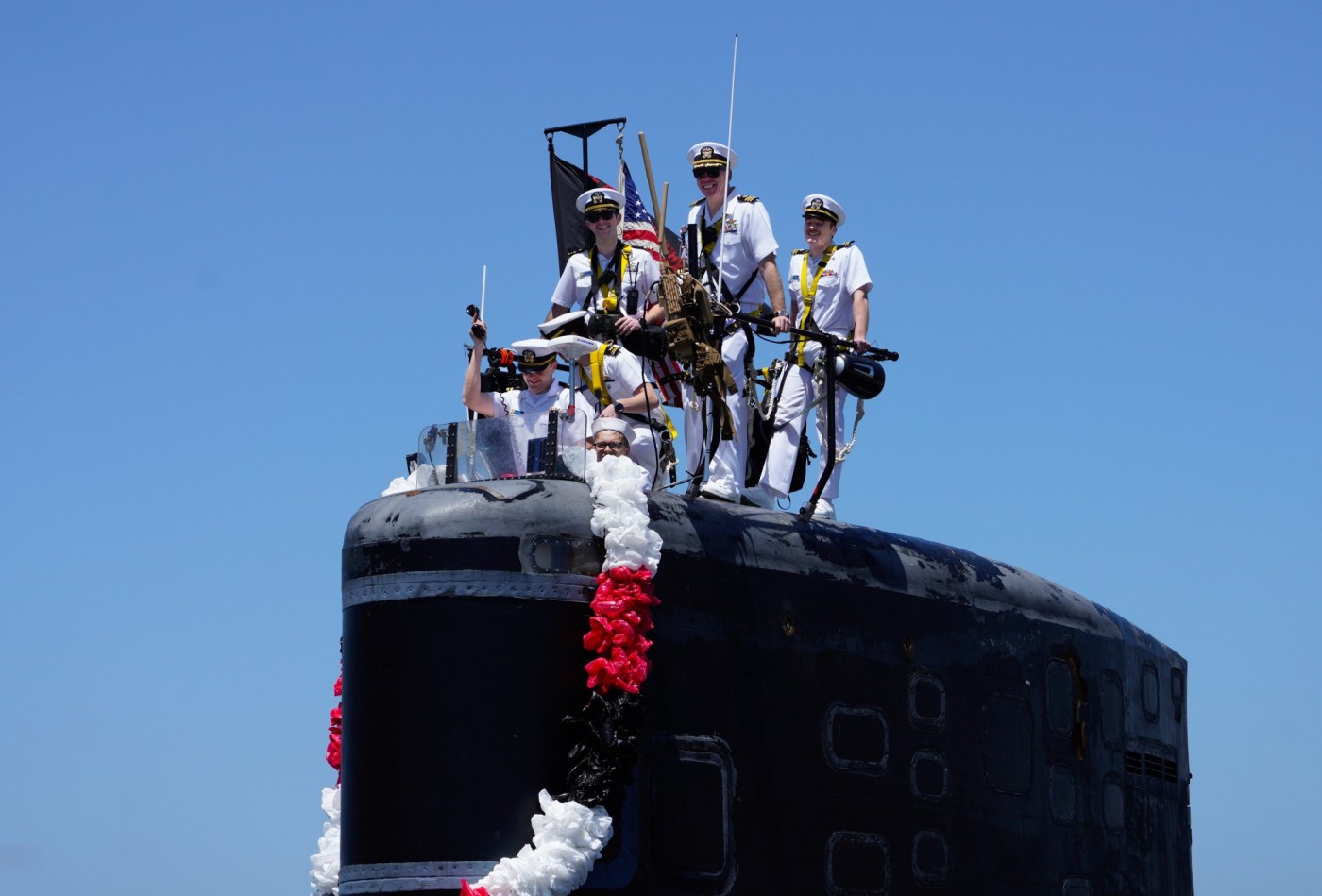
Krystin Schei gasped and beamed with joy Thursday when a dark, menacing vessel sidled up to a pier at Naval Base Point Loma, a heavily-guarded nook in San Diego Bay.
The fast-attack submarine USS Alexandria was returning from a seven-month deployment to the Indo-Pacific, and her husband, Christopher, was among the 130 crew members squeezing through its passageways.
“I haven’t seen him for so long,” she said under a cloudless sky. “This is so exciting. It’ll be like going out on a first date.”
Schei was surrounded by 100 or so other friends and family members who were engaging in the centuries-old ritual of welcoming sailors home from sea.
This time, though, things were a bit different. In a rarity, the Navy invited the news media to cover the homecoming, saying that it’s trying to better connect with the public. It also answered basic questions about deployment.
That is a cultural stretch for the Navy, which has long referred to the submarine world as the “silent service.” It’s so purposefully hush-hush that many people aren’t even aware that San Diego is home to four nuclear-powered Los Angeles-class hunter-killer subs, each capable of firing Tomahawk cruise missiles.
The Alex, as the Alexandria is called, is a 360-foot-long, Cold War-era submarine designed to hunt enemy submarines and surface ships and, if needed, bomb targets on land. It also can deliver Navy SEALs to far-away places.
It’s a spartan life. There aren’t enough beds for all 130 crew members, so some sailors alternate using the same bunk. There’s only about 10 inches of space between their nose and the bunk above.
Sailors onboard the USS Alexandria submarine as they ready to pull into Naval Base Point Loma after returning home from deployment on Thursday, May 15, 2025. The USS Alexandria returns after a seven-month deployment in the Pacific. (Nelvin C. Cepeda / The San Diego Union-Tribune)
They work days measured in 18-hour increments, not 24 — which can be a hard adjustment. There’s little exercise equipment, and little area to work out. And fruits and vegetables quickly become scarce when they’re not close to a port.
“We are completely isolated (on patrol),” said Christopher Rose, the commander of the Alexandria. “We go months without emails to families. We are our own brother’s keeper.”
Going on deployment can be tense, especially right now in the Indo-Pacific, where China has repeatedly threatened to invade Taiwan. The U.S. has said it would counter such an attack and will not tolerate China interfering with international shipping lanes.
There’s also tension between the U.S. and North Korea — which became especially apparent in February when the Alexander docked, in plain sight, in Busan, South Korea. North Korea quickly and publicly described this as an outrageous act of aggression by the U.S.
“They know where we’re at, (but) only when we go into port,” Rose said.
Cooper Rose (l), 10, and Hudson Rose (r), 7, were among the family members who waited pier side for their loved one to return home. Returning from deployment on Thursday, May 15, 2025, the USS Alexandria pulled into Naval Base Point Loma after a seven-month deployment in the Pacific. (Nelvin C. Cepeda / The San Diego Union-Tribune)
Similar remarks were made Thursday by Capt. Will Wiley, commander of San Diego-based Submarine Squadron 11.
The Alexandria’s 217-day deployment “showed you what a nuclear-powered, fast-attack submarine can bring to the Indo-Pacific.
“It’s a phenomenal presence,” he said. “We have the ability to operate anywhere in the western Pacific. What that does to our competitors or would-be enemies in the area is make them think twice about doing something against our nation.”